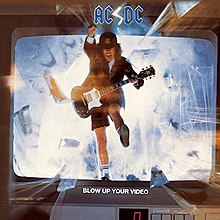
AC/DC are an Australian rock band formed in 1973. They were founded by brothers Malcolm Young on rhythm guitar and Angus Young on lead guitar. Their current line-up comprises Angus, bass guitarist Cliff Williams, drummer Phil Rudd, lead vocalist Brian Johnson and rhythm guitarist Stevie Young, nephew of Angus and Malcolm. Their music has been variously described as hard rock, blues rock and heavy metal, but the band calls it simply "rock and roll". They are cited as a formative influence on the new wave of British heavy metal bands, such as Def Leppard and Saxon. AC/DC were inducted into the Rock and Roll Hall of Fame in 2003.

Highway to Hell is the sixth studio album by Australian hard rock band AC/DC, released on 27 July 1979. It is the first of three albums produced by Robert John "Mutt" Lange, and is the last album featuring lead singer Bon Scott, who died on 19 February 1980.
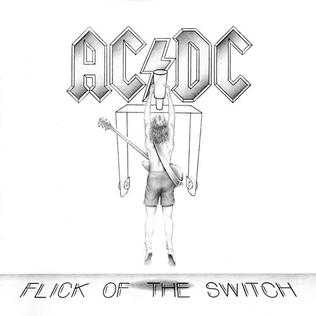
Flick of the Switch is the ninth studio album by Australian hard rock band AC/DC. The album was deemed a commercial disappointment after it failed to match the sales figures of the band's two previous releases, 1980's Back in Black and 1981's For Those About to Rock, and its release represented the beginning of the band's commercial decline. The third AC/DC album to feature lead vocalist Brian Johnson, the album is also the last to feature drummer Phil Rudd before his return on Ballbreaker (1995). The album was re-released in 2003 as part of the AC/DC Remasters series.

Let There Be Rock is the fourth studio album by Australian rock band AC/DC. It was originally released on 21 March 1977 in Australasia, through Albert Productions label. A modified international edition was released on 25 July 1977, through Atlantic Records. It was the last AC/DC album to feature Mark Evans on bass.

Powerage is the fifth studio album by Australian hard rock band AC/DC, released in 1978. This was the band's first album to feature Cliff Williams on bass guitar, and it was also the first AC/DC album not to have a title track and the first worldwide not to be released with a different album cover. Powerage was re-released in 2003 as part of the AC/DC Remasters series.

The Razors Edge is the twelfth studio album by Australian rock band AC/DC. Released on 24 September 1990, through Albert Productions/CBS Records International in Australasia and Atlantic Records in Europe, it was recorded in 1990 in Little Mountain Sound Studios in Vancouver, Canada, and was mixed and engineered by Mike Fraser and produced by Bruce Fairbairn. It was a major comeback for the band, featuring the hits "Thunderstruck", "Are You Ready" and "Moneytalks". This is the only studio album to feature Welsh drummer Chris Slade, who was the drummer for AC/DC from 1989 to his dismissal in 1994.
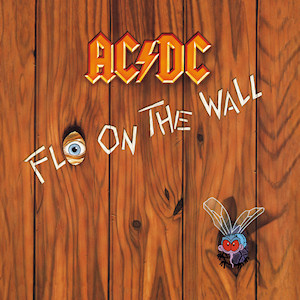
Fly on the Wall is the tenth studio album by Australian hard rock band AC/DC, released on 1 July 1985 by Albert Productions, and Atlantic Records. The album was re-released in 2003 as part of the AC/DC Remasters series.

Family Jewels is a compilation DVD by the hard rock band AC/DC, featuring the group's music videos, live clips and promotional videos from 1975 to 2008. It was released by Albert Productions and Epic Music Video on 28 March 2005. The first disc contains videos from the Bon Scott era (1975–1980), such as the band's first TV appearance and a performance on television ten days before Scott died. The second disc contains material from the Brian Johnson era up to 1991.

Clipped is a video featuring five tracks by the Australian hard rock band AC/DC. First released in 1991, it contained three tracks from The Razors Edge and two from Blow Up Your Video.

"Heatseeker" is a song by Australian hard rock band AC/DC. The song appeared on their 1988 album Blow Up Your Video as the first track. The song was later on Live. The song was also released as a single in various formats, with "Go Zone" as the main B-side. On reaching No.12 in the UK singles chart in 1988, it became their biggest UK chart hit and remained so for 25 years until "Highway to Hell" reached No.4 in December 2013.

"That's the Way I Wanna Rock 'n' Roll" is a single by Australian hard rock band AC/DC. The song appeared on their 1988 album Blow Up Your Video as the second track. A live version of this song can be found on the band's live album, Live: 2 CD Collector's Edition. The B-side of the single was "Borrowed Time".

Dirty Deeds Done Dirt Cheap is the third studio album by Australian hard rock band AC/DC, originally released only in Europe, Australia and New Zealand in 1976. The album was not released in the United States until 1981, more than one year after lead singer Bon Scott's death. This was also AC/DC's first album in its entirety to be recorded with the same lineup, rather than including at least one track recorded with a different bassist or drummer.

Ballbreaker is the thirteenth studio album by Australian hard rock band AC/DC. It was released in 1995 and was re-released in 2005 as part of the AC/DC Remasters series.
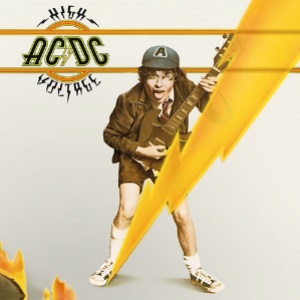
High Voltage is the first internationally released album by Australian hard rock band AC/DC. It contains tracks completed from their first two previous Australia-only issued albums, High Voltage and T.N.T..
The Blow Up Your Video World Tour was a concert tour played by the hard rock band AC/DC, which had 5 legs spreading over the course of 10 months starting on 1 February 1988 in Perth, Australia, finishing on 13 November 1988 in Inglewood, California.
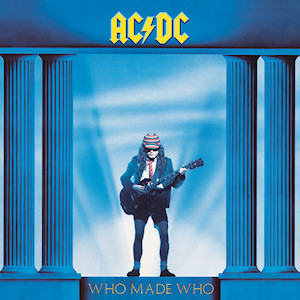
Who Made Who is a soundtrack album by Australian hard rock band AC/DC. Released on 26 May 1986, the album is the soundtrack to the Stephen King film Maximum Overdrive. The album was re-released in 2003 as part of the AC/DC Remasters series.

Backtracks is a box set by Australian hard rock band AC/DC. It was announced on 29 September 2009 and was released on 10 November 2009. This is a collection of the band's studio and live rarities together in one boxset. There are two editions; a Deluxe Edition and a Standard Edition. All tracks have been remastered to match the sound of the 2003 album remasters and many songs appear on CD for the first time. It is the band's second box set of rarities, following the Bonfire release in 1997.

Stiff Upper Lip is the 14th studio album by Australian hard rock band AC/DC. It was released on 28 February 2000. The album was produced by George Young, older brother of Malcolm and Angus Young. It was the last AC/DC album that George produced before his death in 2017.

Rock or Bust is the sixteenth studio album by Australian rock band AC/DC, released on 28 November 2014. Rock or Bust is the group's first album to feature rhythm guitarist Stevie Young, replacing founding member Malcolm Young, who had retired from the band earlier in the year due to health concerns. It is the shortest studio album ever released by the band. At approximately 35 minutes, it is two minutes shorter than their previous shortest album, Flick of the Switch, which was released in 1983. It sold 2.8 million copies worldwide.

Power Up is the seventeenth studio album by Australian rock band AC/DC, released on 13 November 2020 through Columbia Records. Power Up marks the return of vocalist Brian Johnson, drummer Phil Rudd and bassist Cliff Williams, all of whom left AC/DC before, during, and after the supporting tour for their previous album Rock or Bust (2014). This is also the band's first album since the death of co-founder and rhythm guitarist Malcolm Young in 2017 and it serves as a tribute to him, according to his brother Angus; Malcolm received posthumous songwriting credits for all of the album's songs, as they were never-before released tracks written by both brothers.
